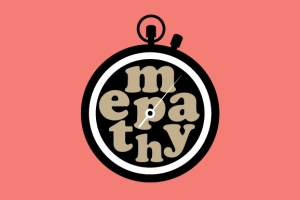You have 8 minutes: You must talk the entire time, even if you are repeating the word “um” to fill time. You have 8 topics: you must address at least 1 and can talk about all 8. You have a partner: your partner can only listen, with as little reaction, verbal or physical, as possible. After your 8 minutes, you will switch. Thus begins The Great 8.
The topics are heavy and may include: God, Romantic Relationships, Finances, Parents, Addiction, Career, Body Image, Roommates, Fear, Crutch, etc.. Talking about them without a response from a real listener is like having a sounding board that only gives back exactly what you say. Not reacting forces the listener to hear everything being said without having to think of responses. The debrief of the experience brings out these lessons and so much more. The end result of this exercise taught by Rabbi Lauren Holtzblatt to a UD Hillel intern who taught it to me? A significant life skill that is otherwise hard to teach–empathy.
This week, two triggers reminded me of the importance of teaching empathy and my favorite exercise for doing so, the Great 8: one, listening to the Anti-Defamation League’s president Abe Foxman at the Kristol Hillel Center’s 20th Anniversary Celebration at the University of Delaware; and two, listening to the abridged version of The Explosive Child: A New Approach for Understanding and Parenting Easily Frustrated and Chronically Inflexible Children by Ross W. Greene. In each case, empathy was identified as the key to communication and change.
Mr. Foxman spoke of the need for empathy as the driver for outrage and for communal responses to hate. Without taking sides politically, our empathy should drive us to outrage over the lives lost in Syria and elsewhere. In response to the vandalism at the Islamic Society of Delaware, our empathy drove an interfaith gathering at the very same time Foxman was speaking. Empathy helps us value life and to work together.
 Dr. Greene’s book posits that we will be able to teach flexibility to resistant children by offering an “empathy step” in response to problems. If authority backfires and the problem can’t be let go, we must engage the child in problem solving. To do so, he advises opening a conversation in which you accept that you may not know the real problem and you do not have the only answer. Open inquiry and neutral drilling for information demonstrate empathy so that the child can and will work with you to address your concerns and his/her own. I have already used this method at AEA with positive results.
Dr. Greene’s book posits that we will be able to teach flexibility to resistant children by offering an “empathy step” in response to problems. If authority backfires and the problem can’t be let go, we must engage the child in problem solving. To do so, he advises opening a conversation in which you accept that you may not know the real problem and you do not have the only answer. Open inquiry and neutral drilling for information demonstrate empathy so that the child can and will work with you to address your concerns and his/her own. I have already used this method at AEA with positive results.
If you knew that someone really wanted to hear your deepest concerns, you might open up more. If you had practice speaking about serious issues with someone really listening, you might discover more about yourself. The listener certainly will understand you better. In today’s world, feeling that kind of connection, whether we offer it or receive it, is all too rare. Try empathy on for size, by doing so, you will learn and teach it. It may be hard, and often it is. The results, though, may change your world. It can take just 8 Great minutes.



Thank you for this…it seems to me that, as we become increasingly digitized and our students become increasingly able to tap into “schooling” without having to be in school, we need to think about what it is that schools do provide these days that is not only of value to students but is essential to their development as people–empathy and compassion are high on that list. I love “The Big Eight,” which might be a bit much for my 7th grade girls…but I will try a “Big Three” with them this week…and then a “Big Five” in a month or so…and build from there. Again…thank you!
Sue, it’s my pleasure. Thank you for your efforts to help children be more fully human.
Good luck with your 7th grade girls. I believe they will rise to the occasion, assuming they feel safe with each other. Let me know how it worked out!
Pingback: Teaching Empathy | sue wurster